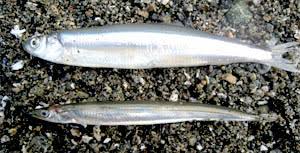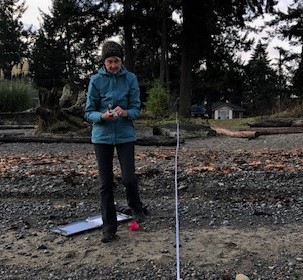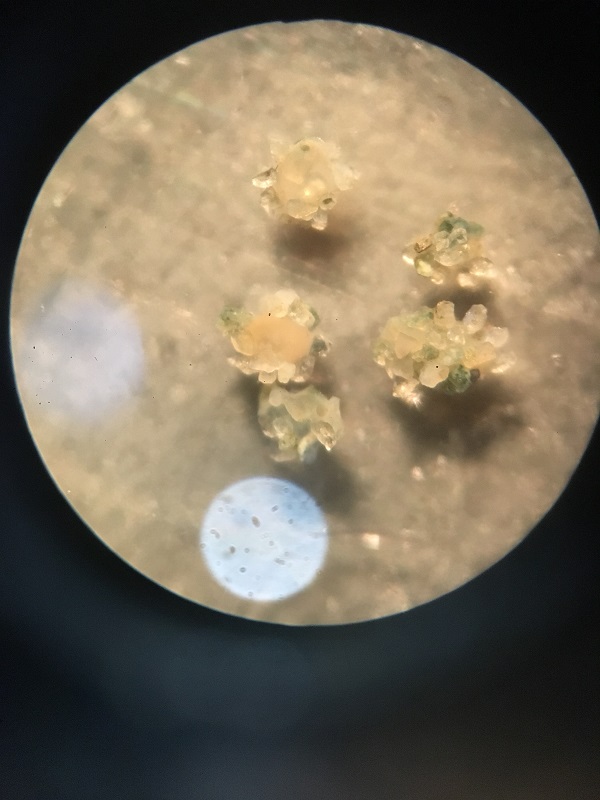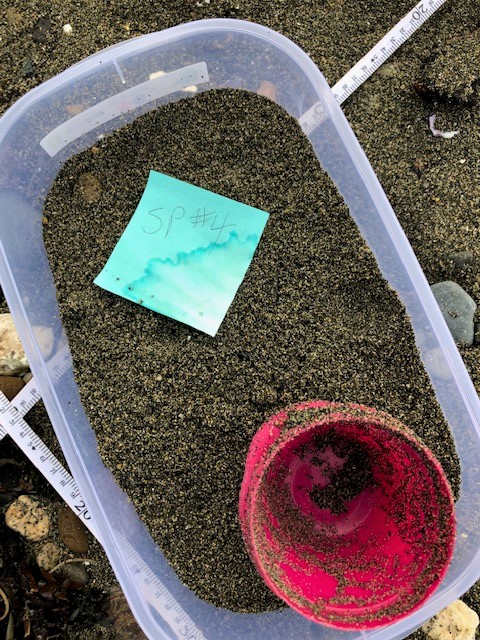Forage Fish : Cornerstone of Ocean Food Webs
"Forage fish are small fish that travel in large schools and are a food source or 'forage' for larger fish and marine mammals. Forage fish, including Pacific herring,  Pacific sand lance (seen in bottom of photo) and surf smelt (seen in top of photo) form the cornerstone of marine food webs. They, and other forage fish species play an important role in the diets of Humpback Whales, Porpoise, Sea Lions, Seals, Salmon and marine birds.
Pacific sand lance (seen in bottom of photo) and surf smelt (seen in top of photo) form the cornerstone of marine food webs. They, and other forage fish species play an important role in the diets of Humpback Whales, Porpoise, Sea Lions, Seals, Salmon and marine birds.
From sand grains to whales, it's all connected. Surf smelt and Pacific sand lance lay tiny eggs (1mm) on pebble and sand beaches just below the high-tide line - an area called the intertidal zone. The number and health of these beaches play an important role in the lives of the salmon, whales and marine birds that rely on each generation of forage fish for food." - Islands Trust Fund
Our actions on and around these beaches, like shoreline development, can impact forage fish spawning habitat, so it is important to identify and map these areas. Since 2018, MVIHES has been identifying and sampling forage fish spawning habitat on the beaches from Craig Bay to Columbia Beach in French Creek so spawning habitat can be protected from disturbance during the spawning window.
It has been suggested the fish prefer full and new moons, when high tides are at the highest and providing maximum area for spawning. At low tide, MVIHES volunteers visit the beaches from Craig Bay to Columbia Beach to collect sand and gravel samples to see if they contain eggs.

On November 10, 2020 MVIHES volunteers, collected habitat data and sand samples from 11 potential spawning sites. The sand samples, one of which is seen in the left-hand photo below, are sieved and "vortexed" to sort out the right sized sand grains where forage fish eggs and embryos can be found. The sorted sand from each site is placed in a sample bottle with a tag and checked under a microscope by VIU and MABBRI for the presence oMVIHES (Mid-Va...
f eggs and embryos. In December of 2018 and 2019, Pacific Sand Lance eggs were found in the sand samples from the beach in San Pareil.


This time it appears Pacific Sand Lance eggs have been found on the beach in the Parksville Community Park. The photo to the right was taken through a microscope by MABRRI and shows five eggs attached to sand particles. The eggs were sent to an expert with the Dept. of Fish and Game in Washington State and verified to be Sand Lance.
In 2021 and 2022, Sand Lance eggs were found at Craig Bay, Parksville Community Beach, Rathtrevor Provincial Park, French Creek Marina, and San Pareil which continues to be the most productive area for spawning.
For more interesting facts about forage fish, read the article by MVIHES member Ross Peterson featured in PQB News.